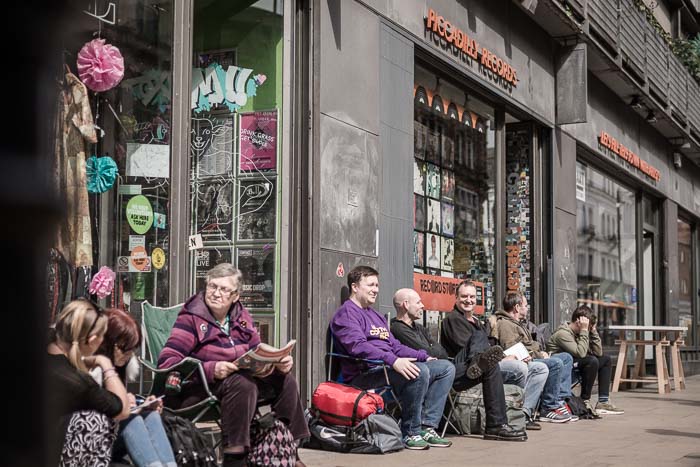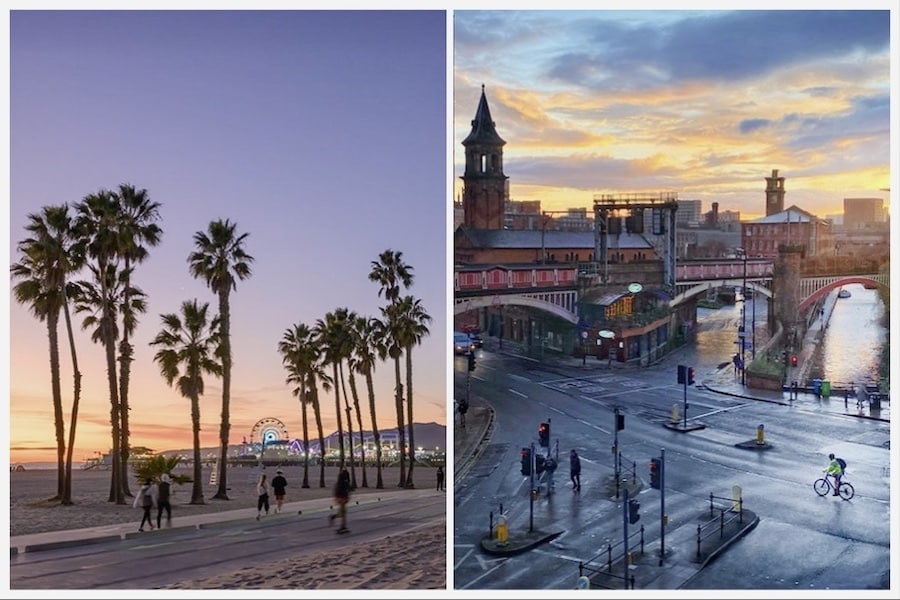Historic church where Mrs Pankhurst was married at risk because of roof damage
- Written by I Love MCR
- Last updated 6 years ago
- City of Salford, Community, Culture, History
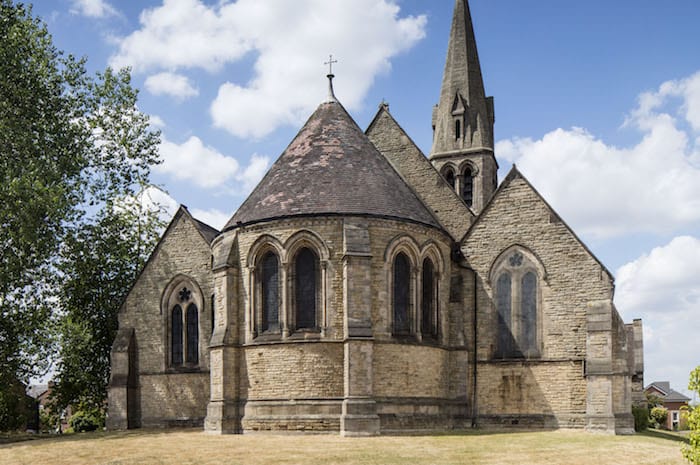
The Church of St Luke, a Grade II Gothic Revival church in Weaste where Emmeline Pankhurst got married in 1879, has been designated at risk because of damage caused by a leaking roof.
It’s one of 24 sites in the north west which have been been added to Historic England’s Heritage at Risk Register this year – an annual snapshot of the health of England’s historic places, shining a light on the listed buildings and places in England that need most help.
This year marks the 20th anniversary of the Heritage at Risk Register. More than two thirds of of the entries on the original 1998 Register have now been rescued, including 15 in the city of Manchester alone. Many of the remaining entries have seen great progress despite being the hardest cases to solve.
Sites saved include a Grade II former Welsh Baptist Chapel in Chorlton-on-Medlock designed by the architect Charles Barry, who went on to design the Palace of Westminster. It has been removed from the Register following extensive repairs and conversion of what was a roofless ruin to student accommodation. The site was derelict before construction work began to bring this building back to life.
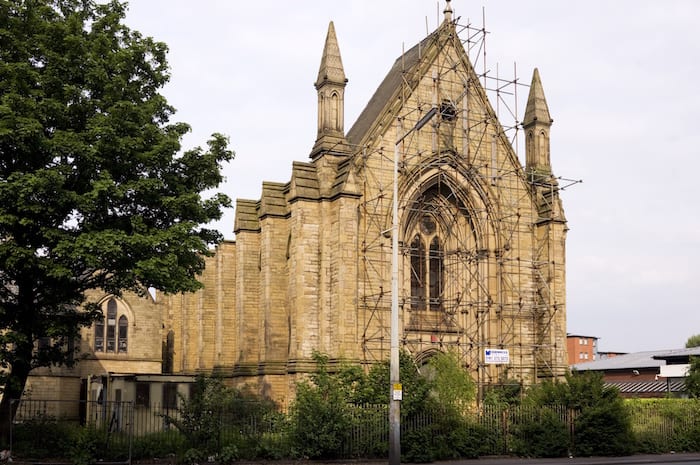
London Road Fire Station, one of the original buildings on the 1998 Heritage at Risk Register, is currently shrouded in scaffolding to enable long awaited repair works to start. Owners Allied London plan to transform this unique and pioneering building into an array of attractions, including a boutique hotel, offices, apartments, cinema, luxury spa and bars and restaurants.
Another success story is the Grade II 1830s Regency villa which was home to the novelist Elizabeth Gaskell.
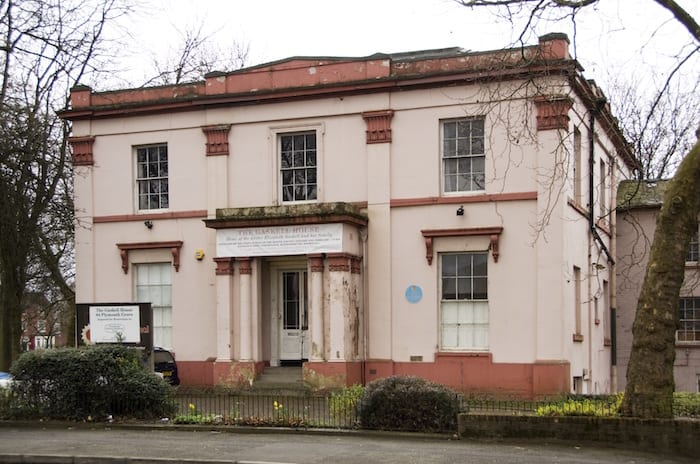
In 2004, the house was taken over by the Manchester Historic Buildings Trust in a precarious state. Historic England grant funded two phases of repairs to save the property from further degradation. The Heritage Lottery Fund then came to the rescue, providing grant support resulting in community and teaching facilities, together with a museum about the Gaskell family that was completed in 2014. The house came off the Register after 14 years.
And six Grade II textile mills in Ancoats were all removed from the Register following works to transform them into new homes and office space following private investment. Twenty years ago, Ancoats was a largely abandoned, unsafe and a forgotten place. But, stimulated by the transformation of its textile mills, it is now busy and vibrant – one of the coolest places to live and work in the country.
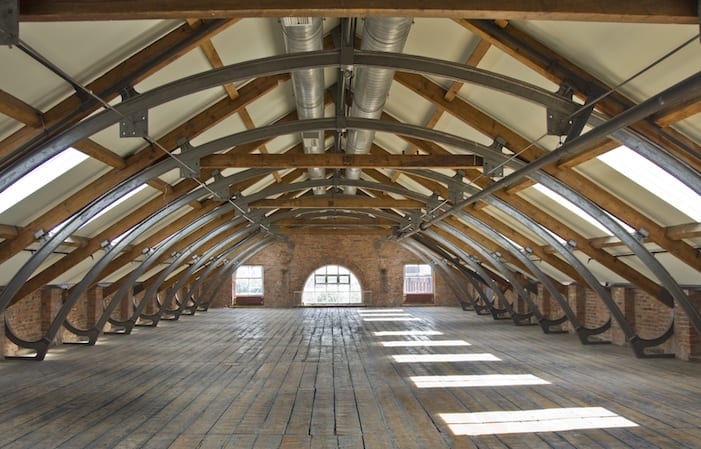
“Over the past 20 years we have used the Heritage at Risk Register to highlight places in need of care and attention,” said Charles Smith of English Heritage.
“We have dedicated time, expertise and money to bring cherished places back into use and we are proud to have played our part in saving them from neglect. Despite the successes, other places continue to fall into disrepair – in particular, we’ve seen a rise in the number of Places of Worship at risk here in the north west. They have been added to this year’s Register and we will focus our attention on them in the years ahead.”
- This article was last updated 6 years ago.
- It was first published on 8 November 2018 and is subject to be updated from time to time. Please refresh or return to see the latest version.
Did we miss something? Let us know: press@ilovemanchester.com
Want to be the first to receive all the latest news stories, what’s on and events from the heart of Manchester? Sign up here.
Manchester is a successful city, but many people suffer. I Love Manchester helps raise awareness and funds to help improve the lives and prospects of people across Greater Manchester – and we can’t do it without your help. So please support us with what you can so we can continue to spread the love. Thank you in advance!
An email you’ll love. Subscribe to our newsletter to get the latest news stories delivered direct to your inbox.
Got a story worth sharing?
What’s the story? We are all ears when it comes to positive news and inspiring stories. You can send story ideas to press@ilovemanchester.com
While we can’t guarantee to publish everything, we will always consider any enquiry or idea that promotes:
- Independent new openings
- Human interest
- Not-for-profit organisations
- Community Interest Companies (CiCs) and projects
- Charities and charitable initiatives
- Affordability and offers saving people over 20%
For anything else, don’t hesitate to get in touch with us about advertorials (from £350+VAT) and advertising opportunities: advertise@ilovemanchester.com
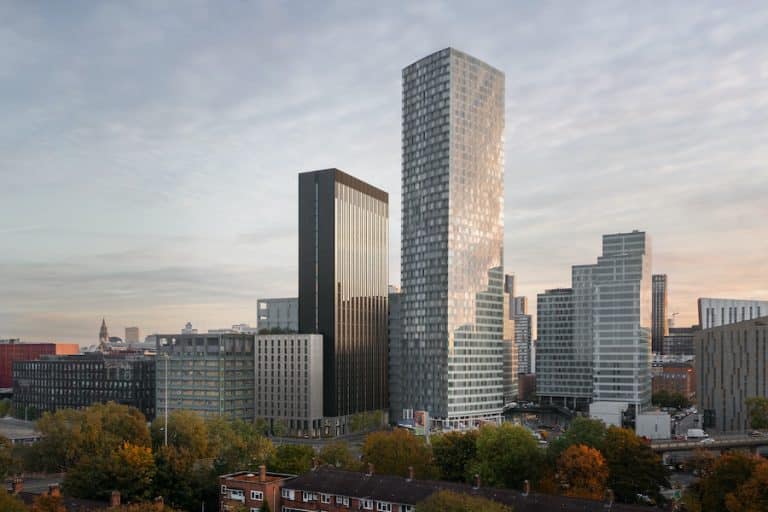

The Manc aerobics queen who trained the Corrie cast is helping raise charity cash
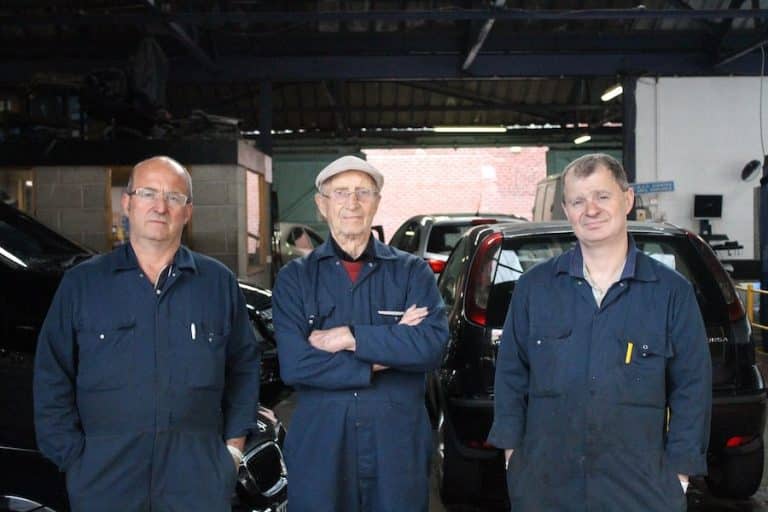
Ancoats to get even cooler as independent market set for MOT garage site

“Manchester is not Britain’s second city, it’s the first” – Jeremy Clarkson
